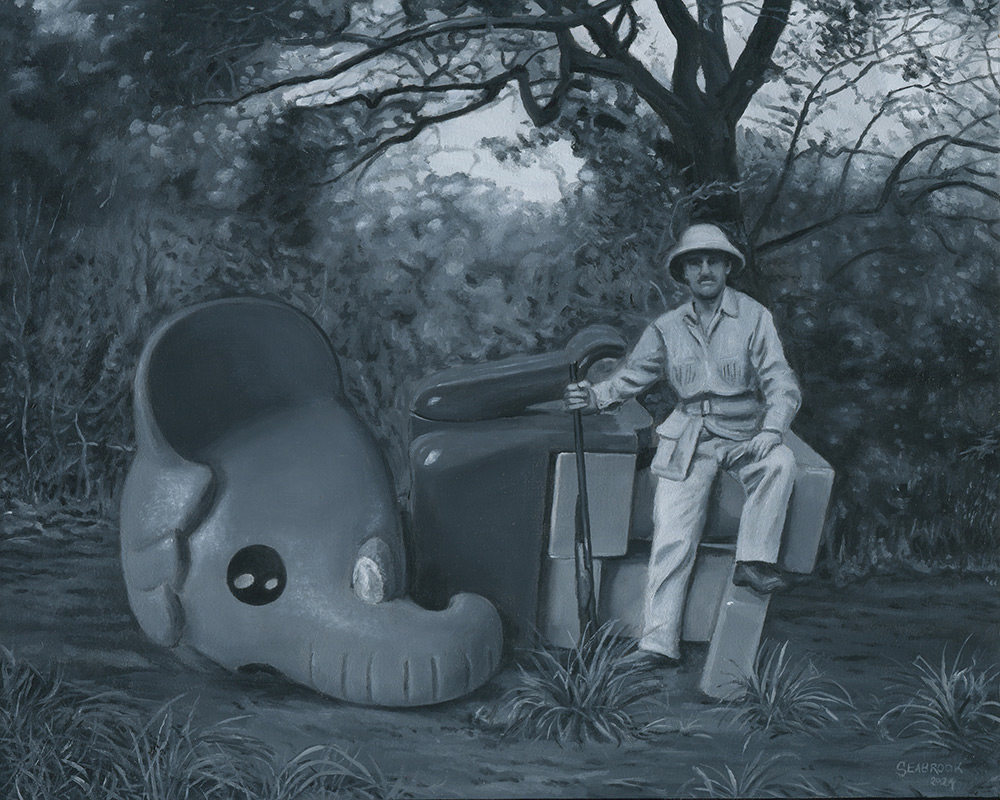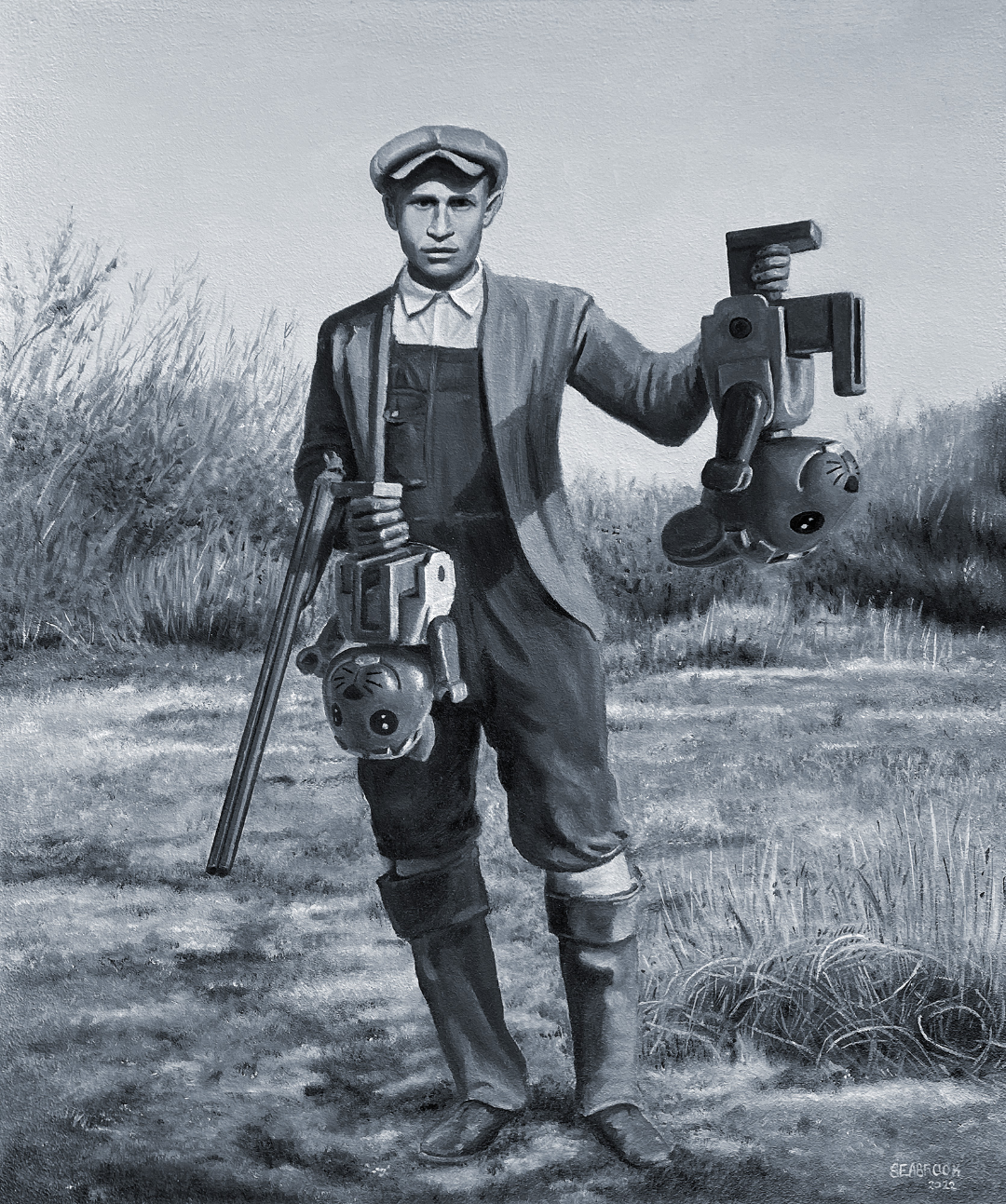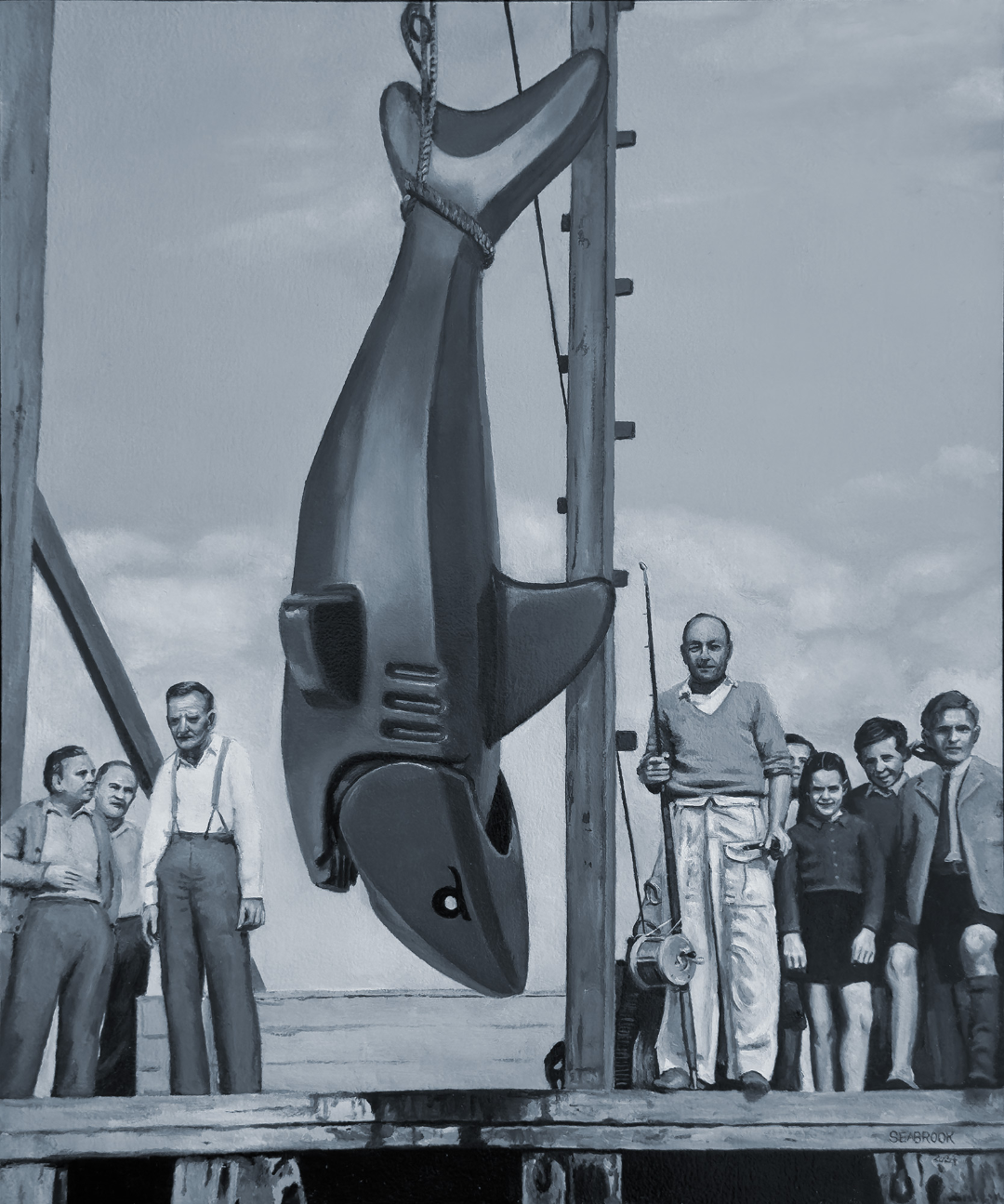Australian painter Mark Seabrook often creates surrealist pieces that use seemingly strange juxtapositions to convey meaning. His series Lego Fabuland, etc is no different, in them he has painted game hunters posing with their trophies. Yet, instead of posing with dead elephants, lions or foxes, these hunters are posing with giant plastic lego animals.

Here Seabrook is asking his audiences to reflect on the cruelty of game hunting as it quite literally treats animals, beings with a life of their own as if they are nothing but plastic toys. This is why Lego Fabuland, etc by Mark Seabrook is aligned with the United Nations Sustainable Development Goal of Life on Land.

Although today global recreational hunting numbers are in decline, the effects of unchecked game hunting from previous decades still haunts the world today. For example, in the last 60 years in Brazil, hunters killed 5.4 million collared peccaries, 804,000 ocelots and margays, as well as 183,000 jaguars. It was this tremendous death toll of jaguars that eventually led to a nationwide ban on game hunting, yet today, The World Wildlife Fund (WWF) estimates that only 26,680 jaguars remain within Brazil’s borders—an area which includes a portion of the Amazon rainforest.

Hence, the importance of Lego Fabuland, etc clever critique of the brutality of game hunting. These pieces by Mark Seabrook forces viewers to confront the absurdity and inhumanity of the practice. His surreal juxtapositions not only challenge the viewer’s perception of animals as objects but also highlight the long-term ecological consequences of human violence against wildlife. Seabrook’s work serves as a powerful visual reminder that the commodification of life has real, irreversible impacts—and calls on his audience to protect the planet’s remaining species from game hunting before they too become lifeless relics of the past.
Find out more about ‘Lego Fabuland, etc’ by Mark Seabrook and his other pieces on his website www.markseabrook.com.au or Instagram @markseabrook_art.
